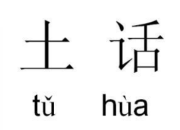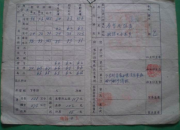关于熊猫的英语演讲稿
时间:2021-08-31演讲稿也叫演讲词,它是在较为隆重的仪式上和某些公众场合发表的讲话文稿。 演讲稿是进行演讲的依据,是对演讲内容和形式的规范和提示,它体现着演讲的目的和手段。演讲稿是人们在工作和社会生活中经常使用的一种文体。下面是关于熊猫的英语演讲稿请参考.
关于熊猫的英语演讲稿
The giant panda (Ailuropoda melanoleuca) ("black-and-white cat-foot") is a mammal classified in the bear family, Ursidae, native to central-western and southwestern China. It is easily recognized by its large, distinctive black patches around the eyes, ears and on its rotund body. Though technically a carnivore, the panda has a diet which is 98% bamboo. However, they may eat other foods such as honey, eggs, fish, and yams.
The Giant Panda is an endangered animal; an estimated 3,000 pandas live in the wild and over 180 were reported to live in captivity by August 2006 in mainland China (another source by the end of 2006 put the figure for China at 221), with twenty pandas living outside of China.[citation needed] However, reports show that the numbers of wild panda are on the rise.
The giant panda has long been a favorite of the public, at least partly on account of the fact that the species has an appealing baby-like cuteness that makes it seem to resemble a living teddy bear. The fact that it is usually depicted reclining peacefully eating bamboo, as opposed to hunting, also adds to its image of innocence. Though the giant panda is often assumed docile because of their cuteness, they have been known to attack humans, usually assumed to be out of irritation rather than predatory behavior.
The Giant Panda has a very distinctive black-and-white coat. Adults measure around 1.5 m long and around 75 cm tall at the shoulder. Males can weigh up to 115 kg (253 pounds). Females are generally smaller than males, and can occasionally weigh up to 100 kg (220 pounds). Giant Pandas live in mountainous regions, such as Sichuan, Gansu, Shaanxi, and Tibet. While the Chinese dragon has been historically a national emblem for China, since the latter half of the 20th century the Giant Panda has also become an informal national emblem for China. Its image appears on a large number of modern Chinese commemorative silver, gold, and platinum coins.











